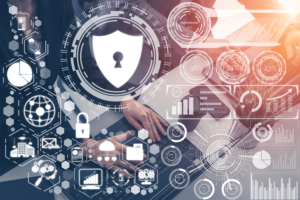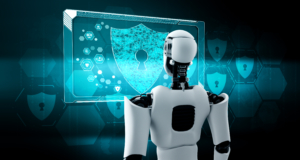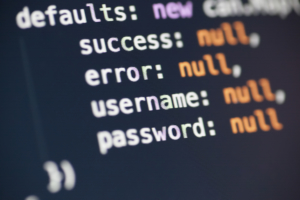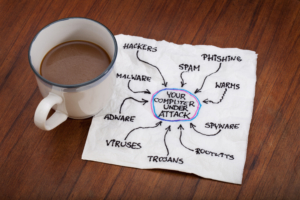Get in touch with us!
Let Us Help
If you need some help getting started, just have a question, or don’t have the time to do it yourself and need a lending hand, we’re here to help you get maximum value as quickly as possible.
If you need some help getting started, just have a question, or don’t have the time to do it yourself and need a lending hand, we’re here to help you get maximum value as quickly as possible.
We offer a comprehensive suite of IT consulting services that provide first-class solutions tailored to meet your professional industry’s needs.
Cyber Security – Tier 1 Techs

Cyber security, also known as computer security, is the practice of protecting electronic information by mitigating information risks and vulnerabilities. Information risks can include unauthorized access, use, disclosure, interception, or destruction of data. Data can include, but is not limited to, the confidential information of business or individual users.
Information risks can be intentional (i.e., cyberattacks) or unintentional (i.e., hacking). Cybersecurity involves protecting electronic information by mitigating information risks and vulnerabilities. Organizations can protect their electronic information by establishing and implementing policies and procedures to identify, assess, and manage information risks.
Cybersecurity is a rapidly growing field that is constantly evolving to meet the latest threats. Organizations should consult with cybersecurity professionals to ensure that they are taking the necessary steps to protect their electronic information.
Cybersecurity is the practice of protecting electronic information by mitigating information risks and vulnerabilities. Cybersecurity involves protecting electronic information by implementing security controls to deter, prevent, detect and respond to attacks.
It is important to understand the definition of cybersecurity because so much of our lives are now conducted online. Banking, shopping, communicating with others – all of these activities can now be done through a computer or mobile device. As a result, cybercriminals have more opportunities to steal our information or harm our devices.
Cybersecurity is important because it helps protect us from these threats. By implementing security controls, we can make it more difficult for cybercriminals to steal our information or damage our devices. We can also detect and respond to attacks more quickly, which can help minimize the damage that is done.
While cybersecurity is important, it is also important to remember that it is not perfect. No security controls are 100% effective, and there is always a risk that a cybercriminal will find a way to exploit a vulnerability. However, by implementing a variety of security controls, we can reduce that risk and help protect ourselves online.
Cybersecurity is not just for big businesses anymore. In fact, small businesses are even more at risk for cyberattacks for a few reasons: They often have fewer resources to devote to cybersecurity, they may be less likely to have implemented preventive measures, and they may be more vulnerable to phishing and ransomware attacks.
Despite the risks, many small businesses don’t consider cybersecurity a priority. In a 2017 survey, only 38 percent of small businesses said they were extremely or very concerned about cyberattacks, and only 47 percent had taken any steps to protect their businesses from cyber related threats.
Small businesses that don’t take steps to protect their data may be exposing themselves to a number of risks, including:
1. Financial losses. A cyberattack can result in stolen data, destroyed data, or ransomware that locks you out of your systems until you pay a ransom. All of these can lead to financial losses for the business.
2. Damage to reputation. A data leak can damage a company’s reputation and cause customers to leave.
3. Loss of intellectual property. Cyberattacks can result in the theft of intellectual property, trade secrets, and other sensitive information.

There are many benefits to implementing cyber security for your business. The first is that you can protect your networks and user data from unauthorized access or theft. This can protect your company’s reputation and keep your data safe. Additionally, cyber security can help you meet compliance requirements and protect your business from cyber attacks.
One of the main benefits of cyber security is that you can protect your networks and user data from unauthorized access or theft. This can be critical for businesses that store sensitive information, such as credit card numbers or social security numbers. If this information is accessed or stolen by nefarious individuals, it can be used to commit identity theft or other crimes. Additionally, a data breach can result in significant financial damages for a business.
Cyber security can also help you meet compliance requirements. For example, if you are required to encrypt your data, cyber security can help you do so. Additionally, cyber security can help you protect your business from cyber attacks. A cyber attack can be devastating for a business, causing lost revenue, data theft, and even physical damage.
Overall, cyber security is an important step that businesses can take to protect their networks and user data. By implementing cyber security measures, businesses can mitigate the risk of data breaches and other cyber attacks.
No business is immune to cybercrime, so it’s important for all businesses to consider implementing a cyber security strategy. By doing so, you can help protect your company’s data, finances, and reputation.

One of the most important aspects of doing business is ensuring your information is safe. Security and risk management are two terms that are often used interchangeably, but they are actually two different things. Security is the process of protecting your information from unauthorized access, use, or disclosure. Risk management is the process of identifying and assessing risks, and then taking steps to reduce or eliminate them.
Both security and risk management are important for businesses of all sizes. Small businesses may be at a higher risk for security breaches because they often don’t have the same level of security measures in place as larger businesses. However, even large businesses can be vulnerable to security breaches if they don’t have a comprehensive security plan in place.
Risk management is important for businesses because it helps them identify potential risks and take steps to reduce or eliminate them. Risks can come from a variety of sources, including natural disasters, human error, and cyberattacks. By identifying and assessing risks, businesses can put in place steps to protect themselves from potential threats.
Security and risk management are important for businesses of all sizes. By implementing a comprehensive security plan and assessing and managing risks, businesses can protect themselves from potential threats.
Asset security is a broad term that can encompass a variety of different security measures, but at its heart, it is the protection of an organization’s assets—both tangible and intangible. Asset security can include anything from the physical security of buildings and equipment to the security of data and information.
Organizations face a variety of threats when it comes to their assets, from theft and vandalism to cyberattacks and data breaches. It is therefore essential that they have in place a comprehensive and effective asset security plan that can protect them from these threats.
This can include measures such as security cameras, alarm systems, lock systems, and password protection. It can also include measures to protect data and information, such as firewalls, anti-virus software, and data encryption.
Asset security is important for all organizations, but it is especially important for those that handle sensitive data or that are considered high-risk targets. By taking steps to protect their assets, organizations can help to reduce the risk of theft, data leaks, and other security incidents.
The process of designing and implementing a cybersecurity program that protects an organization’s computer networks and systems. A well-designed cybersecurity program will incorporate security policies, procedures, and controls that are tailored to the organization’s specific needs.
The first step in designing a cybersecurity program is to identify the organization’s assets that need to be protected. This includes the computer networks and systems, as well as the data and applications that reside on them. Once the organization’s assets have been identified, the next step is to develop a security policy that will protect them.
The security policy should specify the organization’s security requirements, including the types of security controls that are needed. The security controls can be divided into three categories:
– Physical security controls: These controls protect the physical environment and include things like security cameras and alarms.
– Technical security controls: These controls protect the computer networks and systems and include things like firewalls and antivirus software.
– Administrative security controls: These controls protect the data and applications and include things like password policies and user permissions.
After the security policy has been developed, the next step is to implement it. This includes implementing the security controls and training the employees on how to use them. The final step is to monitor the cybersecurity program to ensure that it is effective and that the assets are still being protected.
The practice of protecting your computer networks and user data from unauthorized access or theft. This includes the use of firewalls, anti-virus software, and secure passwords. By using these tools, you can protect your user data and keep your computer networks running smoothly.
While communications and network security are important for home users and businesses alike, they are especially critical for organizations that handle sensitive information, such as banks and other financial institutions. In fact, many organizations are now required by law to have certain levels of security in place in order to protect their customers’ data.
If you are responsible for the security of a computer network, it is important to stay up to date on the latest security threats and how to protect against them. There are many resources available online, including articles, tutorials, and even videos. You can also attend security conferences and workshops to learn from the experts.
By taking the time to secure your computer networks, you can help protect your data and keep your systems running smoothly.

The process of establishing and managing an individual’s digital identity and the permissions associated with that identity. IAM tools and processes allow an organization to securely control access to its systems and data.
IAM is a critical part of an organization’s security infrastructure. Managing access to systems and data is essential for preventing unauthorized access, protecting information and systems from attack, and complying with regulations.
In order to effectively manage identity and access, an organization must first understand the different types of identities that exist within the organization. These identities may include employees, customers, partners, and other individuals who need access to the organization’s systems and data.
Organizations must also understand the different types of access that are available to these identities. Access can include permissions to view, edit, or delete data, or permissions to execute certain actions or functions within a system.
Once an organization understands its identities and access, it can begin to establish and manage the permissions associated with those identities. This can be done through the use of IAM tools such as identity provisioning systems and access management systems.
These tools allow an organization to establish and manage the permissions of individual identities, as well as the relationships between those identities. For example, an organization may want to grant a customer permission to view only certain data, or to execute specific actions within a system.
Used to identify and mitigate the risks to a business or organization from unauthorized access, use, disclosure, alteration, or destruction of information and information systems. Security assessment and testing can also be used to identify and mitigate the risks to a business or organization from espionage, sabotage, and terrorism. Security assessment and testing can also be used to identify and mitigate the risks to privacy from unauthorized access to, use of, or disclosure of personal information.
There are many different types of security assessment and testing. The most common types of security assessment and testing are vulnerability assessment, penetration testing, and risk assessment.
A vulnerability assessment is a process of identifying and quantifying the vulnerabilities of an information system. A vulnerability assessment identifies the vulnerabilities of a system, and quantifies the severity and likelihood of the risks posed by the vulnerabilities.
A penetration test is a process of attempting to exploit vulnerabilities in an information system in order to gain access to the system or to obtain sensitive information. A penetration test is also known as an “ethical hack”.
A risk assessment is a process of identifying, quantifying, and mitigating the risks to an information system. A risk assessment identifies the risks to a system, and quantifies the severity and likelihood of the risks. A risk assessment also identifies the countermeasures that can be used to mitigate the risks.
Responsible for the detection, prevention, and containment of information security incidents. The SOC usually contains multiple security analysts who are responsible for monitoring various security logs and devices for activity that may indicate a security incident.
When an incident is detected, the security analysts will typically begin an investigation to determine the cause of the incident and the extent of the damage. The SOC may also work with other departments within the organization to resolve the incident.
The SOC is an important part of an organization’s information security infrastructure. It provides a central location for the collection and analysis of security information, which can help improve the organization’s overall security posture.
A tight security operations strategy is critical to any organization, small or large, seeking to protect its digital assets and keep its employees and customers safe. By definition, security operations is the practice of defending an organization’s electronic information by monitoring and protecting its networks and systems. A comprehensive security operations strategy incorporates people, processes, and technology and must be constantly reviewed and updated as the organization’s risk landscape changes.
Security is a critical aspect of software development. Poor security can lead to theft of data, corruption of information, and even loss of life. Security must be considered throughout the software development process, from the initial design phase through the operational phase.
There are a variety of security issues that need to be considered in software development. The most common issues include:
1.Data security – protecting data from unauthorized access or destruction
2.System security – protecting the system from unauthorized access or destruction
3.Network security – protecting data as it moves across the network
4.Application security – protecting data as it is processed by the application
5.User security – protecting users from unauthorized access to their data

All of these issues must be considered when designing and building software. Security must be integrated into the software design, and proper security controls must be implemented throughout the software development process.
Security is also a critical consideration when deploying software applications. Security must be considered when planning the rollout of the application, and proper security controls must be implemented during the rollout process. Security must also be considered when configuring the application for use in the production environment.
Security is a critical part of software development, and it should be a top priority for all software developers. By integrating security into the software design and implementing proper security controls throughout the software development process, developers can create software that is safe and secure.
Developers need to be aware of software development security and make every effort to build in security from the beginning of the software development process. Security should be considered throughout the software development life cycle, from conception to release.
They are any threats posed to computers and computer networks. This can include theft of data, such as passwords or credit card numbers, as well as attacks that can disable or damage computers or networks. Hackers are a common type of threat, but there are also many others, such as cyber criminals who use ransomware to lock users out of their computers until they pay a ransom, and state-sponsored hackers who are believed to be behind some of the biggest data breaches in history.
The growing number of internet-connected devices, known as the internet of things (IoT), has also made online threats more prevalent, as these devices are often poorly secured and can be easily hacked. One example of this is the Mirai botnet, which was used to launch massive DDoS (distributed denial of service) attacks in 2016.
As online threats continue to become more sophisticated and widespread, it is more important than ever for businesses and individuals to take steps to protect themselves. This includes using strong passwords, installing antivirus software, and being careful about what websites and apps you visit and what files you download.
Cyber threats are a major concern for both individuals and businesses. The potential for financial and data theft is high, and cybercrime is on the rise. To protect yourself from internet related threats, be sure to use strong passwords, keep your software up to date, and install a security suite on your computer.
A type of software that is developed with the intent to damage or disable computers and computer systems. There are various types of malware, including viruses, trojans, worms, and spyware. Malware can be spread through various means, including email, websites, and file sharing networks. It can also be installed through untrusted software programs, which are often distributed through spam email or infected websites.
Malware, or malicious software, refers to any software that is designed to do harm to a computer or its user. Malware can take many forms, including viruses, spyware, and ransomware. Malware can damage or destroy data, slow down or crash a computer, or steal information. Malware is a growing problem, and users should take steps to protect their computers and data from it.
A type of malware that locks users out of their devices or encrypts their files until a ransom is paid. The malware can be delivered to devices through a number of methods, including suspicious email attachments, compromised websites, and malware software downloads. Once installed, ransomware can lock users out of their devices, encrypt their files, and demand a ransom payment to unlock them. Ransomware is a global problem, and has been responsible for billions of dollars in losses for businesses and individuals. There are several types of ransomware, and new variants are being released all the time.

Generally refers to any ill intent activity where an attacker tries to acquire sensitive information such as user credentials or financial information by pretending to be a trustworthy entity such as a bank, email provider, or online store. Hackers often use email, phone calls, or fake websites to lure users into divulging sensitive information. Be careful with any emails or calls that request your personal information and always check the legitimacy of the sender before responding.
A distributed denial of service (DDoS) attack is an attempt to make an online service unavailable by overwhelming it with traffic from multiple sources.
DDoS attacks can be launched from anywhere in the world and can be very difficult to track and stop. DDoS attackers often use “botnets” – networks of infected computers that can be controlled remotely.
Once activated, these computers can be instructed to send huge volumes of requests to the target website or server, overloading it and making it inaccessible to legitimate users.
DDoS attacks can be used for a variety of reasons, from censorship to extortion. They are often used by hackers as a form of retaliation for a perceived insult or attack, or to disrupt rival businesses.
While DDoS attacks can be very disruptive, they are not typically Goal-oriented and, as a result, not as harmful as other cyberattacks, such as ransomware attacks.
Distributed denial of service (DDoS) attacks are a serious problem on the internet. They are getting bigger and more common, and they can be very difficult to stop. Security experts are still trying to find ways to protect against them, but there is no sure way to completely prevent them.
APTs are a type of cyber attack that are carried out with a high degree of sophistication and planning. They are typically aimed at high-value targets, such as government organizations or businesses, and are intended to steal sensitive information or damage the target’s systems.
APTs are often characterized by their use of advanced malware and social engineering techniques, as well as their ability to evade detection. They can be extremely costly and damaging to organizations that are targeted, and can result in the loss of valuable data, the disruption of business operations, and even the theft of intellectual property.
Advanced Persistent Threats (APTs) are a rising concern for both personal and business users alike. APTs are a type of attack that are difficult to detect and can be very costly and damaging to a company. There are many ways to protect yourself from an APT, including using a good antivirus program, being careful what you click on, and making sure your firewall is enabled.
A man-in-the-middle attack, is an exploit in which an attacker intercepts and alters communication between two parties who believe they are directly talking to each other. The attacker inserts themselves into the communication channel and can potentially see, manipulate, and read all communication between the two parties.
This type of attack is often used to steal sensitive information or to inject malicious code into a communication. It can also be used to circumvent security measures, like SSL/TLS, by intercepting and modifying the traffic before it is encrypted.
Man-in-the-middle attacks can be carried out by exploiting vulnerabilities in networking equipment or software, or by using a forged or stolen certificate to gain access to the communication channel. They can also be executed through social engineering techniques, like phishing, to trick users into revealing their credentials or other sensitive information.

An exploit in which malicious code is inserted into an SQL statement, resulting in the execution of that code by the database server. SQL injections can be used to access unauthorized data, or to execute commands on the database server.
SQL injections are one of the most common types of web application vulnerabilities. They are often used by attackers to steal data, or to gain control of the database server. They are commonly used to steal login credentials or credit card numbers, but they can also be used to install malware on the site.
A type of computer security vulnerability typically found in web applications. XSS enables attackers to inject client-side scripts into web pages viewed by other users. A cross-site scripting vulnerability may be used by attackers to bypass access controls such as the same-origin policy. Cross-site scripting attacks are a major security concern for web users, because an attacker can inject malicious scripts into a vulnerable page and then execute that script on behalf of the user, potentially revealing confidential information or taking control of the user’s browser.
A rootkit is a type of malware that is designed to gain administrator-level access to a computer or network, bypassing all security measures. Once a rootkit is installed on a system, it can be used to mask the presence of other malicious software, steal passwords and other sensitive data, and even disable the system’s security features.

There are many different components to a good cybersecurity strategy. Some of the key components include:
If you are not sure where to start when it comes to cybersecurity, there are plenty of resources available. The National Institute of Standards and Technology (NIST) has a comprehensive guide to cybersecurity that can help you get started. The Department of Homeland Security also offers a variety of cybersecurity resources, including a cybersecurity awareness campaign called “ STOP. THINK. CONNECT. ® ”
Cyber security is a critical component of protecting your business and your customers. By taking the time to implement a good cybersecurity strategy, you can help protect your information assets and reduce your risk of a data breach.
Cyber security is the protection of computer networks and user data from unauthorized access or theft. It is a critical component of keeping businesses and individuals safe in the digital age. Though businesses and individuals are increasingly aware of the importance of cyber security, many still do not take the necessary precautions to protect themselves. Lack of cyber security can lead to theft of data, loss of money, and even interference with critical infrastructure.